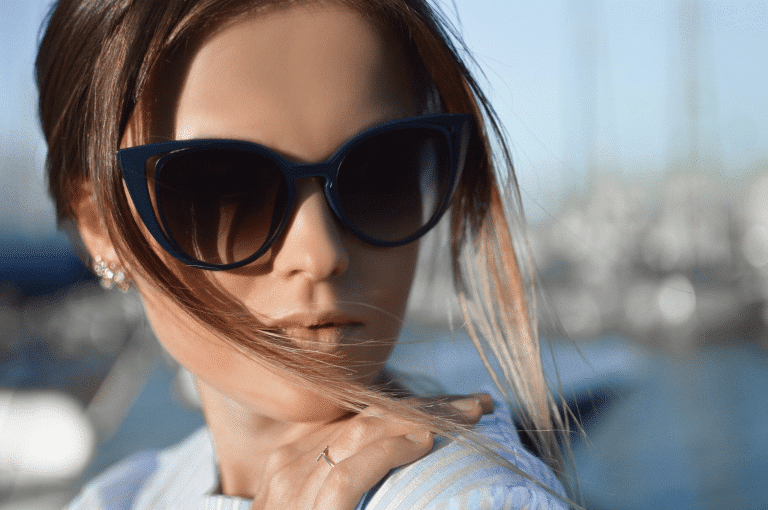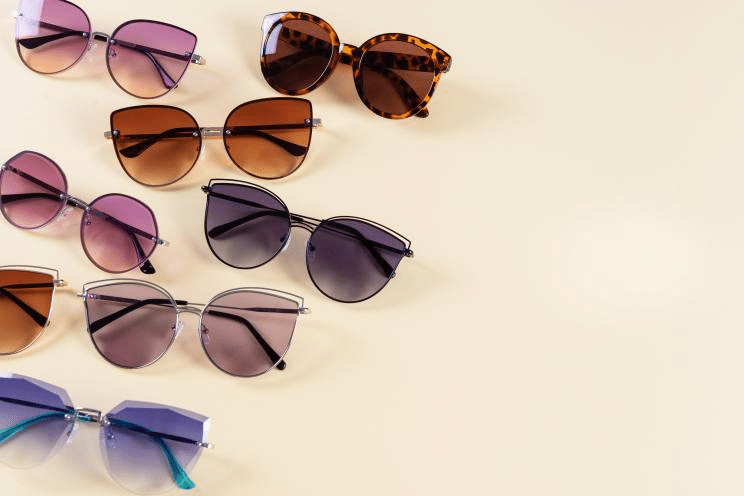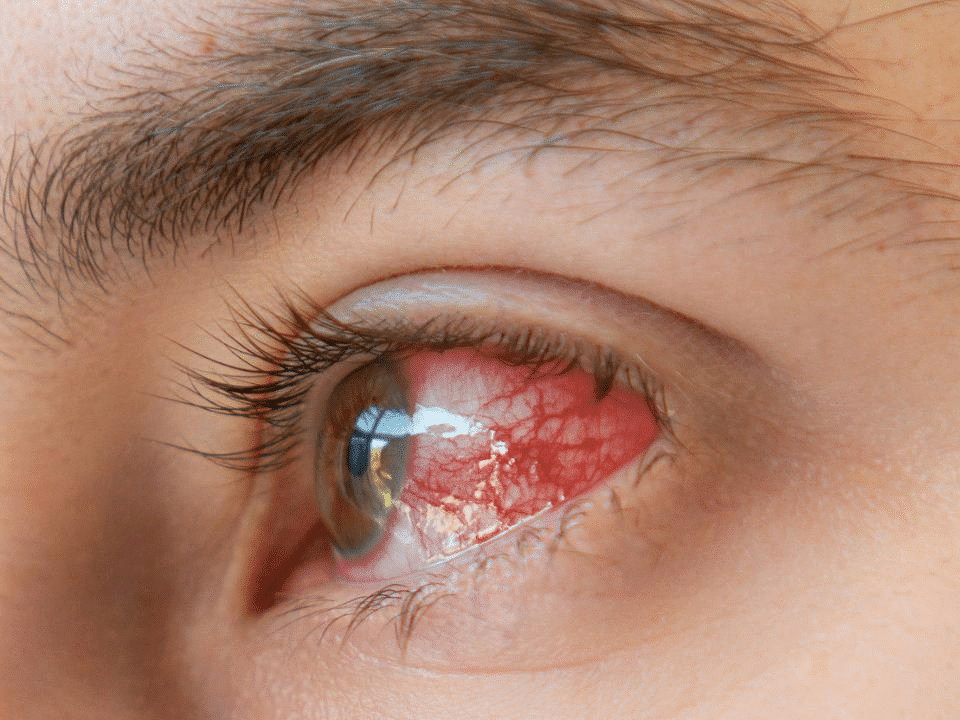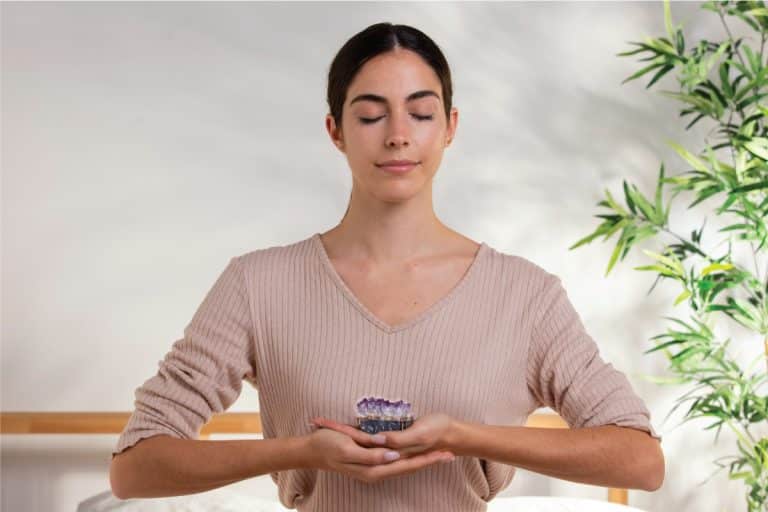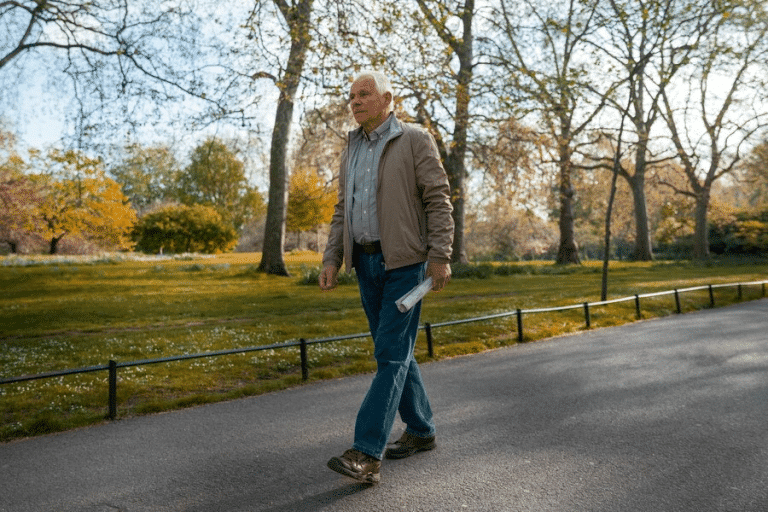Finding a great deal is always fun, especially for accessories like sunglasses. That rack of low-cost shades near the checkout looks tempting, right? They seem stylish, feel like an easy pick-me-up, and they make the sunlight less harsh. But before you grab a bargain pair, know that wearing cheap sunglasses might actually be putting your eyes at risk. Saving a little now could lead to eye problems later, especially if your sunglasses don’t provide real UV protection.
Think about it: you wouldn’t go into the hot sun without using sunscreen on your skin, so your eyes deserve the same attention. Just like sunscreen, not all sunglasses protect you from the sun’s harmful ultraviolet (UV) rays.
In fact, using sunglasses without real UV protection can leave your eyes more exposed than if you wore none at all. Let’s look at why real UV protection is so important – and how cheap sunglasses can cause serious harm.
Different Kinds of UV Rays and How They Affect Your Eyes
To understand why good UV protection matters, it helps to know the types of UV rays and how each one affects your eyes. There are three main types: UVA, UVB, and UVC. All three come from the sun, but they reach us in different ways.
UVA and UVB Rays: What They Do
The biggest risks for your eyes come from UVA and UVB rays. UVA rays have longer wavelengths and make up most of the UV rays that reach the ground. They go deep into the skin and eyes, leading to aging and likely playing a part in problems like cataracts and macular degeneration. UVB rays are shorter but more powerful and can cause sunburn.
These rays are especially tough on your cornea and lens. UVC rays don’t matter much for us, as they’re mostly blocked by the Earth’s atmosphere.
How UV Exposure Hurts Eyes in the Short and Long Term
UV exposure can cause both quick and lasting harm to your eyes. Short-term, a lot of UV all at once can cause photokeratitis, which is like a sunburn of your eyes or “snow blindness.” This can bring pain, redness, light sensitivity, and a scratchy feeling – not fun, even if it only lasts a little while.
Over time, the harm adds up. Years of UV exposure can increase the odds of getting eye diseases that may steal your vision, like cataracts and macular degeneration. The more often your eyes are unprotected, the higher the risk grows each year.
Why Cheap Sunglasses Without Real UV Protection Are Dangerous
Here’s the main problem: those cheap sunglasses you find everywhere might look fine, but without real UV protection, they don’t protect your eyes. In fact, tinted lenses without UV filters can be worse than not wearing any sunglasses because they fool your eyes into letting in more light.
Are Dark Lenses Without UV Coverage Risky?
This is really important. Wearing dark sunglasses without proper UV protection can actually be more dangerous than wearing none. That’s because dark lenses make your pupils widen, letting in more light. If the lens doesn’t stop UV rays, your eyes end up taking in even more of the damaging rays, making things worse instead of better.
Eye Problems from Not Enough UV Protection
Over time, too much UV without protection can lead to serious eye problems that can hurt how well you see.
Cataracts and Macular Degeneration
Cataracts happen when the lens in your eye gets cloudy, causing blurry vision. While age is the biggest cause, UVB rays can speed up the process. Some research shows about 1 in 5 cataract cases is linked to UV. Macular degeneration is vision loss in the “sharp vision” part of your eye, mainly from sun damage over years.
Photokeratitis (Corneal Sunburn)
Photokeratitis is the official term for sunburned eyes, usually from bright sun reflecting off snow, water, or sand. It’s painful but usually heals on its own; still, it’s a warning your eyes took real damage.
Pterygium and Pinguecula
These two growths appear on the clear covering of your eye. Pterygium is a wedge-shaped bump, while pinguecula looks like a yellowish spot. Both can happen after years in the sun, wind, and dust – another reason to pick sunglasses that block more than just straight-on sunlight.
Is Polarization the Same as UV Protection?
People often confuse polarized lenses with UV protection, but they’re not the same thing.
Why Polarized Lenses Alone Aren’t Enough
Polarized lenses cut glare from surfaces like water or roads. This makes things more comfortable and clear, but the polarization process alone doesn’t block UV light. Sunglasses can be polarized and still let UV through, or block UV without polarization. For the best eye protection, look for sunglasses that are both polarized and have 100% UV (UV400) labeling.
Are Expensive Sunglasses Always Better?
It’s natural to think pricier sunglasses offer better protection. While more expensive glasses often use higher quality parts, price doesn’t guarantee UV safety.
Affordable and Safe Options Exist
You don’t have to spend a lot to get good UV protection. Many well-known brands sell affordable sunglasses that meet the 100% UV400 standard. Focus on verified labeling and buy from reputable retailers or optical shops when possible. Avoid super cheap, unbranded sunglasses, but know that “safe” and “affordable” can go together.
Why Choosing Quality Sunglasses is Worth It
Wearing sunglasses with certified UV protection is one of the easiest and most important ways to keep your eyes healthy for a lifetime. It goes beyond just making you comfortable in bright light; it helps avoid serious eye diseases that build up over years of sun exposure, like cataracts and macular degeneration. Good sunglasses also mean clearer vision and less eye fatigue outdoors, done right. Plus, they protect the skin around your eyes from sun damage.
Making the smart choice to invest in quality sunglasses means you’re protecting both your looks and your long-term eyesight. If you’re unsure what sunglasses are best for you, ask an eye care professional for advice.

